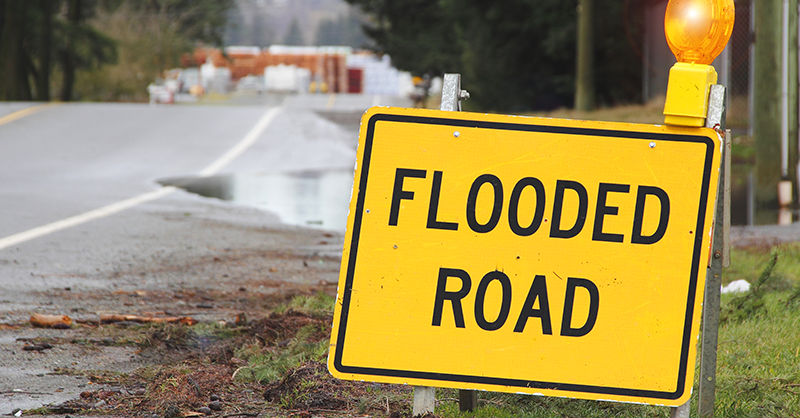Awareness Campaign Details Dangers On Flooded City Roads

Recent California mudslides have claimed at least 20 people and flooded roadways remain a concern whenever heavy rains fall.
Drivers may be tempted to forge ahead when faced with a flooded road. Yet, the National Weather Service has some life-saving reasons to fight that urge.
“As little as a foot of rushing water can sweep a small vehicle away,” said Chris Vaccaro, public affairs officer for the National Weather Service. “Two feet of moving water can wash away most vehicles.”
One of the most common mistakes? Underestimating the depth of water.
“Television news broadcasts drivers going through the water, but it’s not a good idea,” Vaccaro said. “Don’t plow ahead when confronted with water, turn around and take an alternate route.”
Vaccaro succinctly summed up the National Weather Service’s position on flooded streets.
“Turn around, don’t drown.”
Severe downpours causes floods, but heavy rains aren’t the only cause of roadway floods. The existing infrastructure may not be capable of handling the flow of water or ongoing construction may impede water flow.
“Don’t take unnecessary chances,” he said. “You don’t want to be in a situation where you need to be airlifted, where you’re putting your life-and someone else’s-at risk.”
Below are some tips from the National Weather Service on how to handle flooded roadways and flash floods:
- Turn around, don’t drown. Don’t risk it. Make a U-turn and head for dry ground.
- Look for warning signs posted on the roadway. Yellow caution signs are placed in flood-prone areas, while pink signs are placed by road crews at the site of an existing flood.
- Monitor weather reports. Avoiding unnecessary errands when flash flood warnings are issued.
- Never drive or walk on flooded roads. As little as a foot of rushing water can sweep a small vehicle away. Two feet of moving water can wash away most vehicles.